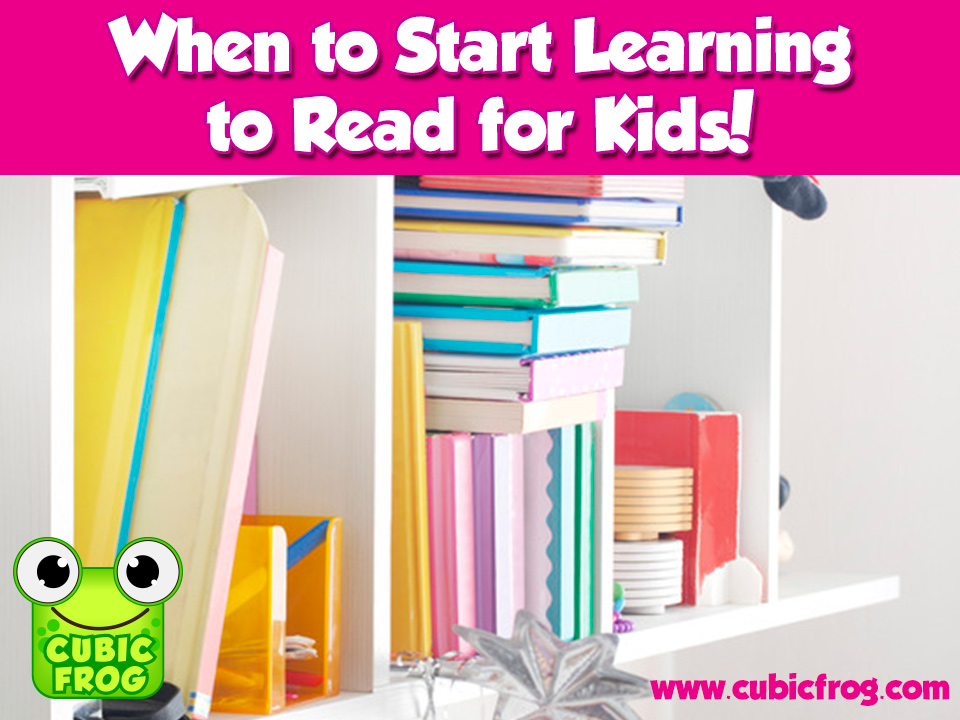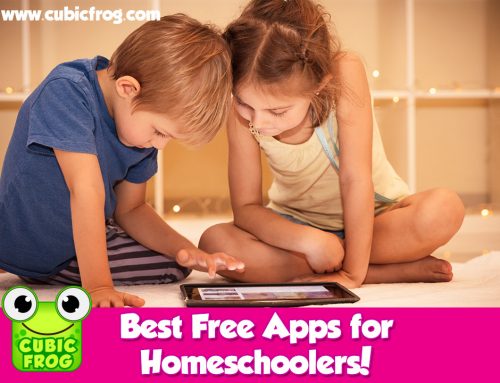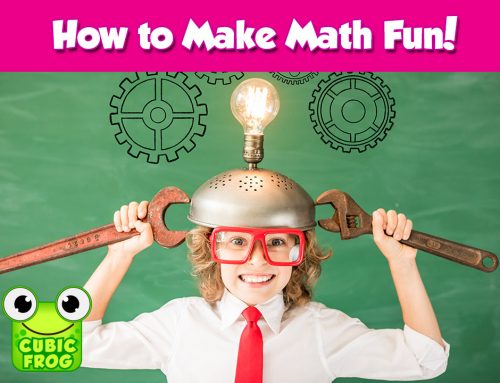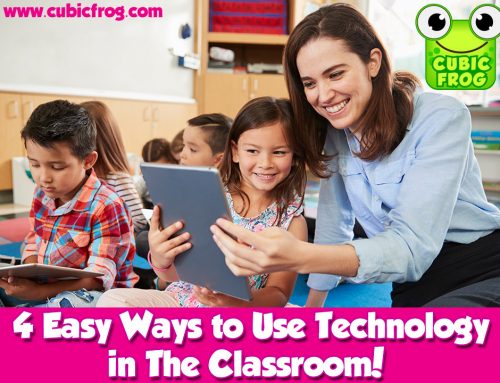When to start learning to read: Is there such thing as too early?
At Cubic Frog® Apps, we believe learning is a life long journey that begins at birth. The skill of reading is something which is acquired in pieces, step by step with time and patience, and it’s never too early to start building. While we don’t encourage waving flashcards in front of a newborn with high hopes, there are skills to be developed from the moment your little one arrives.
Keep in mind most children don’t begin to read until 6 years old (some earlier, some later, of course). Before this, your baby and toddler will discover so much– patterns, shapes, colors, and letters– this is the fastest rate of knowledge growth in their entire lives. And you will be your little one’s leader throughout this magical and wild expansion.
The first teacher in a child’s life is their parents, and we’ve got a few tips on how to guide your child towards literacy (and fun!) from the very beginning.
When to start learning to read: now!
1. Read to your child
Reading to your child is an opportunity for mental and physical bonding. Holding your little one while they hear the sound of your voice and having visual cues from the book is a complete package of beneficial sensory stimulation.
Establishing a mentality that reading time is special and fun will keep your child interested in books throughout their lives. We recommend 40 minutes or 3-5 books a day of reading, starting from day one.
2. ABC’s
Before we read we must learn the alphabet. The best way to begin is to simply point of the different letters that surround us; signs, t-shirts, decorations, etc. Putting real life meaning and importance to letters makes them more tangible and easily.
Toddler age is a great time to introduce letter flashcards and activities and the alphabet song is fantastic for any age. For tips and a step by step guide on teaching the alphabet please visit our article, ‘5 Tips to Teaching Your Toddler ABC’s’.
3. Ask them to ask you
Make sure to ask your child questions during the reading, whether they are able to answer verbally or not. For toddler and younger readers, ask them to point to different objects, shapes, colors, sizes, or letters. For older children, try asking them about more specific parts of the book (what do you think will happen next? who is your favorite character? etc).
Asking questions help children become more involved in their reading and helps practice important skills like prediction and summarization. We want little ones to not only read a book, but more important is the comprehension. By asking questions we are able to see how or why a child may not be understanding what they’re reading.
4. Model your best bookworm. Be a good example
It’s true what they say: monkey see, monkey do. One of the earliest forms of learning your child will establish is by repeating the habits of those around them. So, if you want your child to love reading, one of your most powerful tools is to show and tell them how much you love to read.
5. Sensory learning
Sensory learning is any type of learning which engages more than one sense (sight, touch, smell, taste, hearing) at a time. Endless studies have shown that humans of all ages, but especially young ones, are able to learn and remember better through sensory play. Stimulating multiple senses is not only efficient, it’s fun! For more information and sensory play ideas, please click on over to our article, ‘Intro to: Sensory Play’.
Sensory play can be easily incorporated into your reading simply be reading aloud, asking your little one to be the official page turner, or buying books with different textures incorporated inside are great for newborns and toddlers.
Colorful educational games utilizing sound and touch commands are great tools for independent play and practice. Cubic Frog® prides itself on making joyful sensory filled learning experiences for all learning styles. Our favorites freebies for early reading skills are EduKitty ABC, Preschool Edukitty, and Preschool EduPaint.
Think outside the reading box by crafting up your own books, letter cards, and games. Need some inspiration? We’ve got hundreds on our ABC Resources Pinterest board.
6. Rhyming
Rhyming words are also called word families and help children establish patterns in reading. For example, if a child can read and recognize the word ‘will’ then they can much more easily recognize ‘fill’, ‘hill’, etc. Point out rhyming words in stories, create games and puzzles using word families by replacing the first letter, and recite songs that incorporate rhyming words. Since cognition is key, make sure your little one understands both the makeup of the word and what the word represents.
7. Phonetics
The English language has some tricky letter combinations. In order to decode words, it’s important for children to recognize the sound each letter makes and the sounds they make together. Before your little one can decode on their own, you can take the time to point to a letter or group of two letters and sound them out. Noticing pairings like ‘th’, ‘ch’, and ‘sh’ are important firsts to being able to read a word.
Once you child is old enough, have them do the pointing and sounding out. And as always, more important to being able to decoding the word, is understanding what the word itself means and how it relates to the rest of the sentence.
8. Sight words
Sight words are those tricky words which must be memorized and can’t be sounded out, words like ‘the’ and ‘me’. Luckily, all books are heavy with sight words, which provides lots of opportunities to point them out to your child. Here’s a complete list, organized by school age, of sight words. Start slowly introducing a few of these words using games focused on repetition.
When learning to read, it’s important to incorporate all these elements into your growing child’s habits on a daily basis. Making sure to not focus too heavily on one area means reading remains exciting and fun.
Don’t forget, the ultimate goal here is to open your child into the incredible world of reading. Words are one of the most powerful tools a person can arm themselves with, and reading unlocks endless opportunities. The gift of literacy is something your child will carry with them throughout their entire lives, so guide them with patience, enthusiasm, and positive reinforcement from the very start.
Resources:
http://www.icanteachmychild.com/10-steps-to-teaching-your-child-to-read/
http://www.createdbyteachers.com/dolchlist.html






